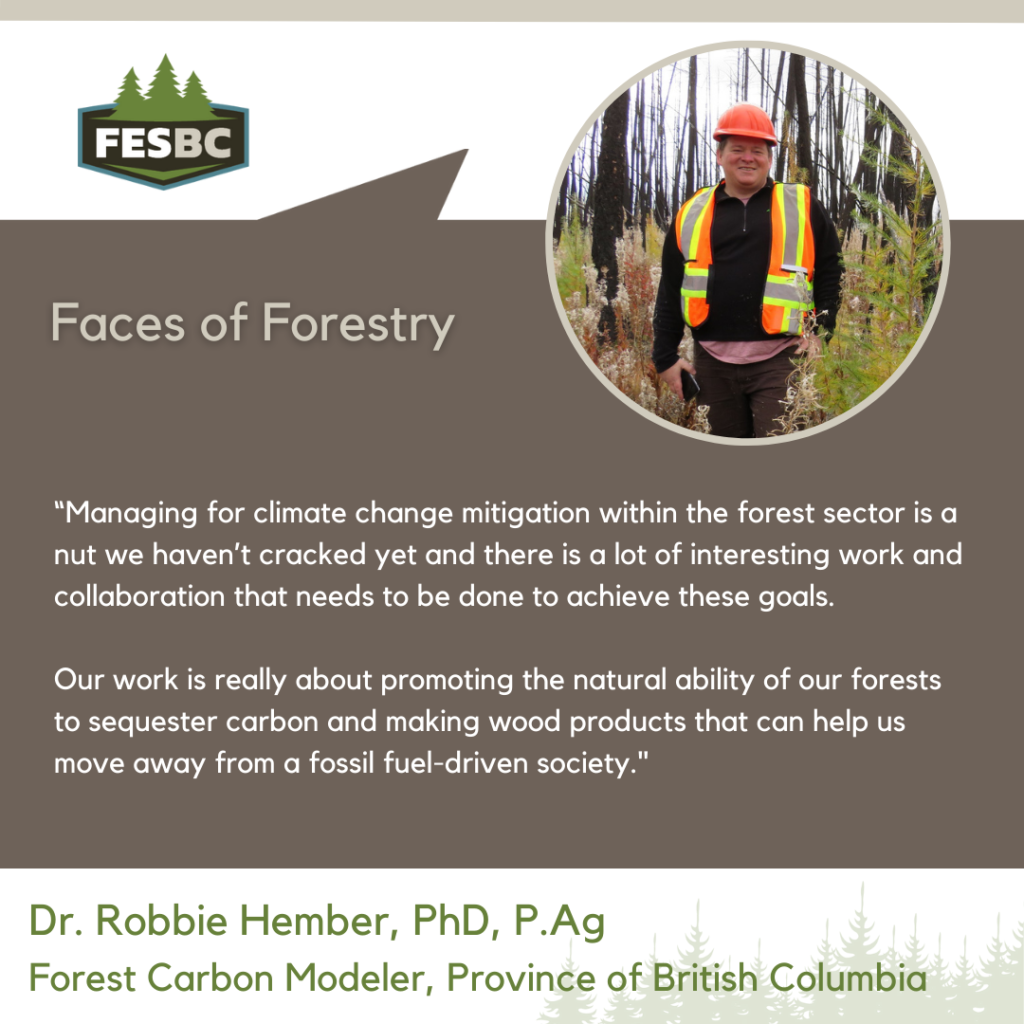Faces of Forestry: Dr. Robbie Hember, PhD, P.Ag, Forest Carbon Modeler
Faces of Forestry is an initiative of the Forest Enhancement Society of BC (FESBC) to highlight people doing great work to enhance our forests throughout British Columbia. This month, we feature Dr. Robbie Hember, PhD, P.Ag, Forest Carbon Modeller with the Province of British Columbia.

Robbie was drawn to forests as a carbon modeller because he saw a lot of opportunity to have an impact and work on challenging but rewarding problems at the nexus of climate change and resource management. He is particularly interested in the balance between enhancing our use of wood and bioproducts to displace the use of non-renewable resources, while also reducing the degradation of sensitive ecosystems and conserving forests to keep carbon out of the atmosphere.
“Managing for climate change mitigation within the forest sector is a nut we haven’t cracked yet and there is a lot of interesting work and collaboration that needs to be done to achieve these goals,” said Robbie.
Dr. Robbie Hember is a professional forest carbon modeller with the Office of the Chief Forester in the Ministry of Forests. He has been part of the Forest Carbon Initiative team since 2017 and has worked on forest carbon research in British Columbia since 2007. He received training in physical geography and plant biology at Trent University before studying the carbon cycle of forest ecosystems at the University of British Columbia.
“Forest carbon monitoring systems estimate how much carbon is out there on the landscape. We achieve that using computer simulation models that take in all the amazing information that’s collected out in the forest, combine all that data to piece together the flow of carbon through living ecosystems, and spit out a prediction of how management decisions influence the abundance of heat-trapping greenhouse gases in the atmosphere,” explains Robbie.
As a research associate at the University of British Columbia, Robbie led collaborative efforts by the Pacific Institute for Climate Solutions and the Canadian Forest Service to account for impacts of environmental change on forest productivity in British Columbia.
Robbie’s role at the Office of the Chief Forester builds on this work, to understand the effects of land use, forest management policies, and harvested wood products on the fluctuating amount of carbon in the atmosphere. As Robbie explains, “our work is really about promoting the natural ability of our forests to sequester carbon and making wood products that can help us move away from a fossil fuel-driven society.”
